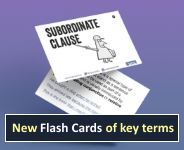Baby Sentences
Goals
- Use implicit grammatical knowledge to translate examples of infant speech into complete sentences.
- (For older students) use explicit grammatical knowledge to identify the types of changes that have been made in translating from the original examples.
Lesson Plan
The teacher explains that today, we will look at some real examples of English spoken by infants, and translate it into adult speech.
When children first start to talk (at around the age of 12 months, give or take a month or two), they often start by producing one word at a time. Sometimes it’s not an even a ‘proper’ word, but what linguists tend to call a ‘proto-word’. This really just means that it’s almost a word and has the function of a word. As children get older, they tend to put words together into sequences, and this is obviously a very important area of grammar, because without structure words don’t usually have as much meaning.
In this task, students will be presented with some child language data – things that children have said – and will be asked to make sense of the structures that they have used. The students' main task will be to work out what they think the infants would have said if they were adults with a full range of grammar at their disposal. In other words, they need to provide an ‘adult version’ of what the children are saying.
Remember: there are different possible meanings to what a child might be saying and much of it depends on context. So, while some answers are more likely than others, there may not be definitive ‘right’ or ‘wrong’ answers.
The examples are presented on 8 slides in the Activity page in the right hand menu. They are copied here:
- Daddy go work
- Mummy read
- Daddy bike
- What that
- Where blanket
- Sock off
- Teddy fall
- Sammy tired
Older students can use the downloadable worksheet below to fill in their answers. They should think of as many different possible interpretations as possible.
You might find that you have come up with alternative versions that look something like these below:
Daddy go work
Daddy is going to work
Daddy has gone to work
Daddy goes to work
Daddy, go to work
Mummy read
Mummy is reading
Mummy, read (to me)
Daddy bike
That’s Daddy’s bike
Look, daddy, there’s a bike
Daddy, get me the bike
Daddy is cycling
What that
What is that?
Where blanket
Where is the blanket?
Where has the blanket gone?
Sock off
Take my sock off
I am taking my sock off
My sock has fallen off
Your sock has fallen off
Teddy fall
Teddy has fallen (off something)
Teddy has fallen (over)
Sammy tired
I am tired
Further discussion
This lesson requires younger students to use their implicit understanding of syntax and morphology. They exercise their grammatical awareness by building complete sentences out of incomplete parts, adding plural suffixes to nouns, changing the suffixes of verbs to show agreement, adding auxiliary verbs, and so on.
Older students can identify explicitly the changes that they have made, including adding suffixes to nouns and verbs.
Much of the language used by children at this kind of age is drawn from the world around them: objects, people and toys in their immediate environment and the actions related to these. There is also a focus on the immediate needs of the child. So, if we take teddy fall as an example, we can see that the noun teddy has been used, and the action that has happened to teddy (fall) or that teddy has done himself (because teddies can be quite naughty) has been added as part of a two-word expression.
The other examples of data show a similar pattern:
- objects or people (all nouns): Daddy, Mummy, bike, blanket, sock, teddy, Sammy
- object (demonstrative pronoun): that (where the thing being identified should be clear from the context)
- actions associated with them: go, read, off (if we understand this to mean ‘take off’ or ‘fall off’), fall
- modifiers which add qualities to the objects or people: off, tired
Next we can have a look at what they don’t say.
As mentioned above, the language of a child is often concerned with the here and now and their immediate needs and environment – so we might expect words to do with the future or past to be absent. We might also expect them to concentrate on the words that contain most meaning and leave out the ones that don’t, or that are smaller and less easy to define the use of. This is pretty much what happens. Children don’t tend to use any tense other than the present, and sometimes they don’t really use that in a standard way. Often the verb is left in its simplest form, for example go, read, fall.
Welcome!

Englicious is totally free for everyone to use!
But in exchange, we ask that you register for an account on our site.
If you’ve already registered, you can log in straight away.
Since this is your first visit today, you can see this page by clicking the button below.
- Printer-friendly version
- Log in to view or leave comments

